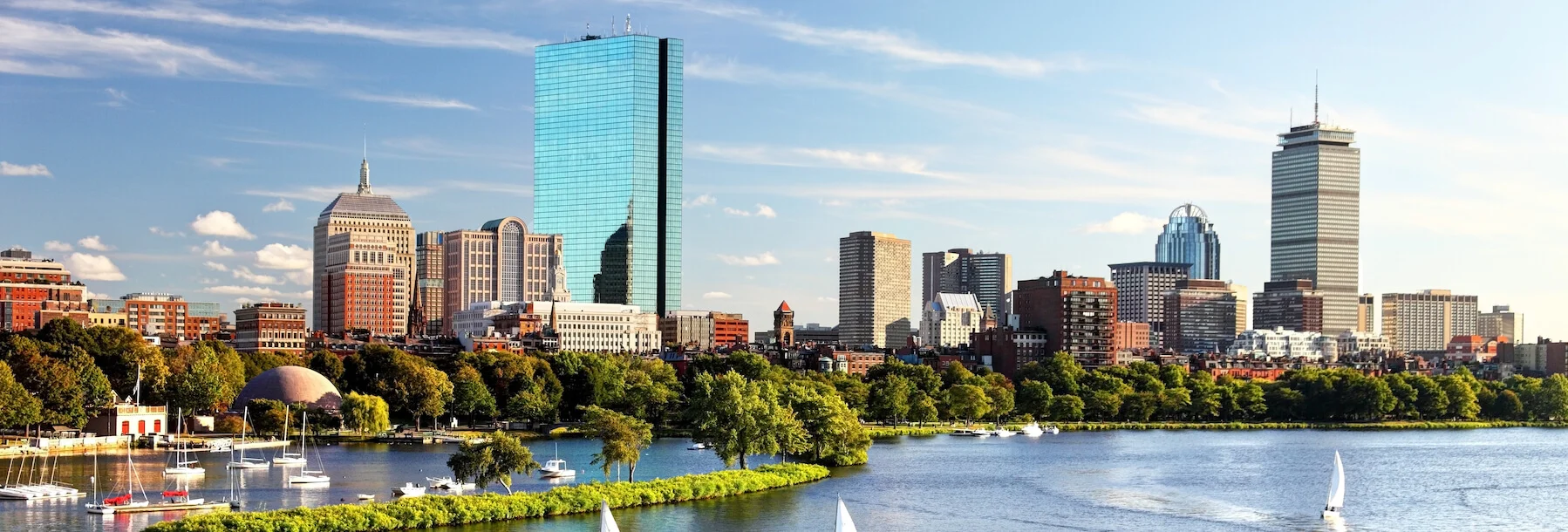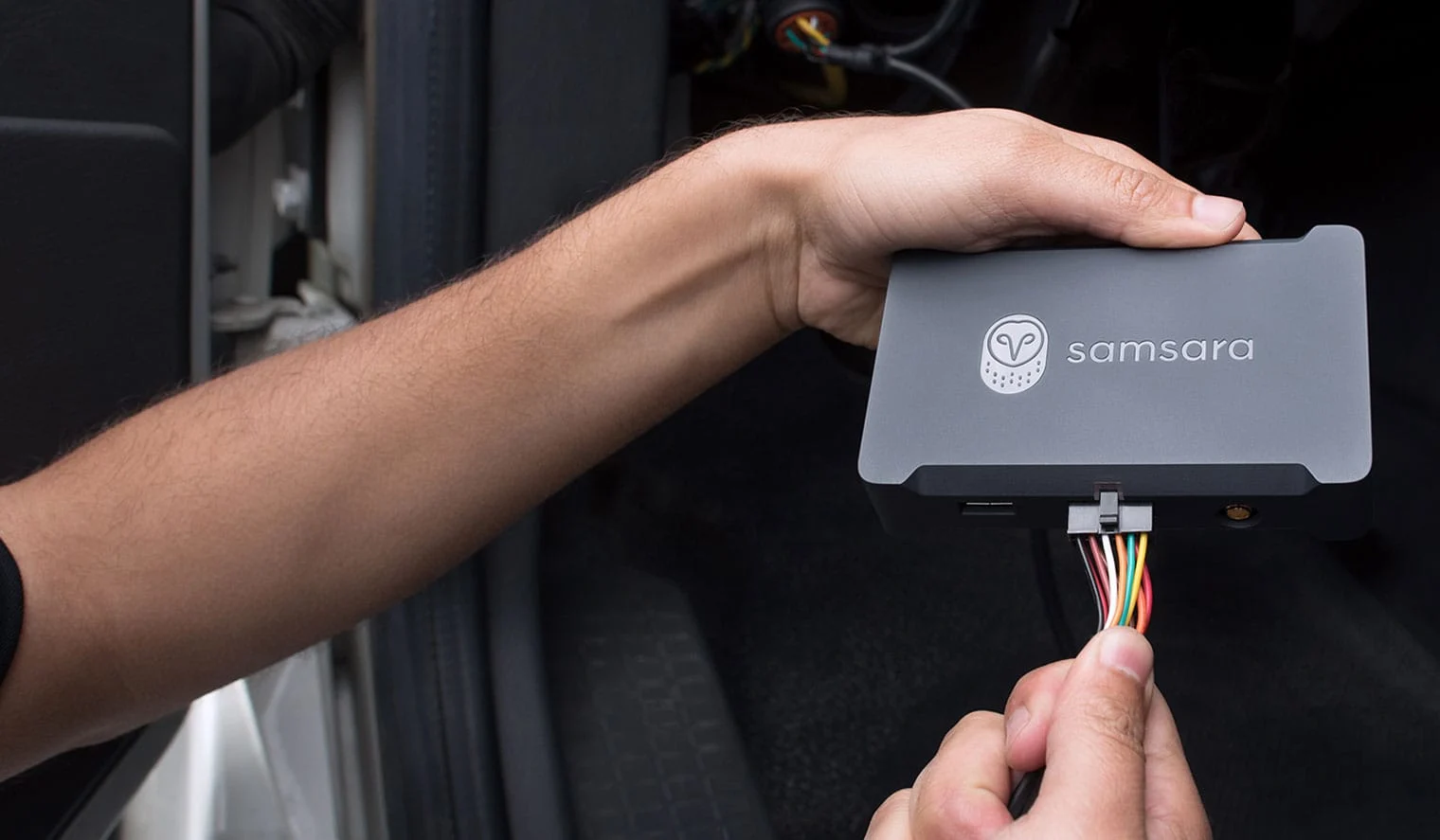
The City of Boston increases EV miles driven by 36% with Samsara EV features
“The ability to see and track EV battery levels with Samsara has been great for us."
Matthew Bradley, Superintendent of Automotive Maintenance at the City of Boston
The City of Boston relies on Samsara’s connected sensors and plug-and-play technology to improve citizen services, gain insights into their overall fleet including their electric vehicles (EVs) and snowplows, and plan for the future of their fleet.
State of Charge (SoC) EV reporting helps increase the efficiency and reliability of the City of Boston’s EV and plug-in hybrid (PHEV) fleet.
Plug-and-play real-time GPS tracking enables higher quality citizen services, billing accuracy, and administrative efficiency for the Public Works Department.
Proximity Search allows the City’s Central Fleet Department to cross check vehicle locations with citizen complaints to address concerns and back up their services.
Meet the City of Boston
Responsible for overseeing nearly 700,000 residents and 23 neighborhoods, the City of Boston’s Public Works Department (PWD) is what keeps Boston running. Whether it’s maintaining more than 68,000 streetlights, removing snow during blizzards, or managing trash and recycling services, PWD is responsible for making sure Boston’s streets, sidewalks, and bridges are safe, clean, and maintained.
With over 400 heavy- and light-duty vehicles to maintain and repair, PWD operates the City’s largest fleet. In addition to their snowplows and other municipal vehicles, the City also operates a fleet of electric vehicles (EVs) and plug-in hybrids (PHEVs) for their municipal vehicle sharing program, which gives employees access to vehicles for travel to meetings, conferences, and events.
In order to maintain PWD’s quality of service and reputation in the community for such an expansive fleet, Matthew Bradley, the Superintendent of Automotive Maintenance for the City, turned to Samsara to improve the efficiency of the City’s vehicles. By leveraging Samsara’s real-time GPS tracking for both their electric and non-electric vehicles, the City has been able to noticeably improve their efficiency and sustainability.
Boston’s vision for a greener future with electric vehicles
From more reliable public transportation to cleaner air quality, the City of Boston is always looking for ways to invest in their infrastructure to improve the quality of life for their constituents. As the transportation industry shifts to embrace green alternatives and local governments begin to look for alternative vehicle solutions, the City of Boston saw an opportunity to lead the way on this fundamental change.
“We see this at this as an opportunity to green our fleet”
With the goal of reducing their environmental impact, the City saw a big opportunity to invest in EVs and set a goal for full fleet electrification by the year 2030. To inform their electrification and EV infrastructure strategy, the City actively leverages the data Samsara provides, such as average miles driven and energy use to identify which vehicles are good candidates to transition to electric. “This data helps us transition what we call the ‘low-hanging fruit vehicles’ that we know will be easy to switch to EVs,” said Bradley. With these transitions, the City realized a 36% increase in miles driven by its electric fleet. Additionally, parking consistency data helps identify areas to potentially develop more charging infrastructure.
Although environmental concerns are one of the main motivations for the City of Boston, they also see the investment in EVs as a cost-savings opportunity. The changes the City has made using Samsara data has helped them to move the needle in both areas by reducing 513k pounds of CO2 emissions and saving an estimated $86k in fuel spend acrross 18 vehicles.
In order to bring the initial costs of purchasing EVs down, the City is taking advantage of the Mass EVIP program which offers rebates up to $7,500 per electric vehicle.
“The City of Boston set a goal for full fleet electrification by the year 2030”
To start, the City invested in eight fully electric light-duty vehicles and 14 plug-in hybrids to include in their municipal vehicle sharing program. In addition, the City’s code enforcement team uses the EVs to inspect both snow and trash removal as well as citizens and local businesses’ compliance with city code. By leveraging EVs and hybrids over traditional internal combustion engine vehicles (ICEs) for these services, the City of Boston drastically reduces their carbon footprint and does their part to improve the City’s air quality.
But despite their environmental and cost-savings benefits, operating EVs comes with its own set of unique challenges. That’s where Samsara comes in.
Solving range anxiety and preventing “bricked” EVs with telematics
One of the most common challenges for EV owners and fleet managers is range anxiety—the concern that their vehicle battery will run out before they reach their destination or the next charging station. That anxiety can be compounded when managing a fleet of EVs, and even more so when the EVs are critical for city employee transportation. To calm range anxiety and ensure that vehicles have enough charge to perform their intended service, fleet managers need insights into their vehicles’ state of charge.
For Bradley, range anxiety was the main hurdle for adding EVs into the City’s vehicle sharing program. Initially, he was worried that employees would forget to plug the EVs in once their trips were complete, which could potentially lead to “bricked” vehicles—EVs that run out of charge before getting to a charging station. In fact, in the first few months, a few city EVs bricked and needed to be towed back to the city from surrounding areas.
Samsara provides insight into EVs’ state of charge in real time and sends alerts when vehicles fall below a certain battery percentage, giving Bradley the confidence that his EVs won’t leave any employees stranded. Additionally, Bradley can easily find the nearest city-owned EV charging station to guide low-battery vehicles to by simply overlaying the charging station map when planning his routes.
“Being able to track our EV battery levels ultimately comes down to peace of mind,” said Bradley. “The ability to see and track our EV battery levels with Samsara has been great for us.” This data, coupled with real-time GPS location information, gives Bradley critical insights into where his EVs are and how much charge they have left.
By looking back at historic GPS and charging data for his EVs, Bradley can now coach drivers on when to take EVs out on the road and reassure reluctant drivers that the EVs they take on the road will make the trip successfully. Not only are EVs a more environmentally friendly option, but they’ve also been able to save the City money on travel costs. Bradley has been able to recommend EVs instead of local air travel for employees traveling to and from events in the New England area. In one example, an employee was able to use one of the city’s EVs to travel to Maine for an event, saving over 110 lbs in carbon emissions.
Leveraging telematics to ensure quality of service and manage contractors
Aside from their EV and PHEV fleet, the City has plenty of other vehicles and services to keep track of. During snowstorms, the City of Boston operates and maintains 110 snow plows to remove snow from the streets and sidewalks. But when larger storms strike, the City needs backup. To ensure that heavy snowfall doesn’t cause the city to come to a standstill, the City contracts out as many as 750 snow plows to keep the streets clean and safe.
For PWD staff, the biggest challenge in managing contractors is twofold: tracking real-time and historical locations and making sure the vehicles are performing the intended service.
“Service quality is everything in the Public Works Department,” said Bradley. “Our citizens are our customers and we strive to keep the streets clean and safe for them.”
In order to better track service areas, PWD’s IT director worked with Samsara to set up geofences around each of the public works department’s ten districts. These geofences help the department ensure that plows are performing the snow service in the right location during the time they’re billing for. For Bradley, this comes down to accountability. “Samsara’s tracking capabilities help us make sure we’re spending taxpayer money responsibly,” he explained
Before Samsara, the City would distribute phones to contractors that they had to carry at all times. But the phones often ran out of battery or lost connectivity, making it difficult for city administrators to track locations and ensure service quality.
Now, on top of installing Samsara Vehicle Gateways (VGs) into their city-owned fleet, the City also distributes VGs to contractors instead of phones. With Samsara’s easy plug-and-play technology, contractors are able to easily install the VG into their plow, allowing the fleet department to track contracted vehicles within minutes of installation. Not only does this take the burden off of the drivers by eliminating the need to carry extra phones, but now the City can bill more accurately and save taxpayer money.
“The plug-and-play functionality makes it very easy. Now we can make sure the plows are where they’re supposed to be and that their devices are powered on,” said Bradley. “This helps us ensure that they are plowing and not idling in one location.”
Additionally, the City used Samsara’s open API to integrate with their contractor management software.
Through the API, the City is able to pull in vehicle information, match vehicles to the planned routes for each district, ensure each district has plow coverage, and streamline the contractor check-in and billing process.
With Samsara VGs deployed in the contractor plows, the City of Boston can easily verify contractor billing statements by matching the locations of the vehicles during the billed time. “This ability to accurately track our contractors’ work has given us a greater sense of accountability,” said Bradley.
Using Proximity Search to ensure quality snow plow service for citizens
During the winter months, snow plowing is an essential city service to keep streets and residents safe. Without proper plowing, vehicles can get stuck on the roads or even cause accidents while traveling on slick roads. During large storms in Boston, citizens will often call the City’s 311 line to notify or claim that their street wasn’t plowed.
With Samsara Proximity Search, which allows users to easily search a location to see which vehicles were nearby during a specific time, city administrators are now able to pull up historical location information to verify constituent complaints and follow up with contractors to ensure that streets are plowed in the future.
Additionally, citizens sometimes allege that snowplows hit their vehicles, which can be very costly and time consuming for the City. Now, if the City receives a citizen complaint about a damaged vehicle, administrators can quickly check to see if their plows were in the area at that time and exonerate innocent employees or contractors.
Similar posts like this




